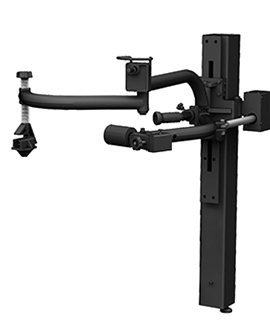
Guide to Tire Equipment: When to Repair vs Replace - Expert Analysis (2024)
22/11/2024 | Unite Automotive Equipment
You want to get the most out of a large purchase like a tire changer or wheel balancer, but just like a car, there’s preventive maintenance that’s required so your equipment runs at its peak and you avoid downtime. Performing preventive maintenance can sometimes lead to costly downtime and expense.
How do you know if your tire equipment is worth repairing or replacing? There are many factors to consider. Use this checklist as a guide the next time you need to determine whether you should repair or replace your tire service equipment.
1. The Type of Repair
Replacing parts, hoses, pneumatic valves, and cylinders is a relatively easy fix. But when you get into more costly and complicated repairs, such as replacing a machine’s motor, transmission or major structural elements like steel arms or its pedal assembly, it might be time for a replacement. To make your repair vs. replace decision easier, calculate your dealership’s downtime. Take this into consideration: The average cost of downtime for a dealership that does a high-volume tire business is 2.5 cars per day. Let’s convert that to dollars: one car is about $400, so $400 x 2.5 = $1,000. Multiply that $1,000 by the number of days your machine is down, and it may be leaving an unwanted hole in your pocket.
2. Age
As a rule of thumb, the average lifespan of tire changers and wheel balancers is about seven years. Holding on to older equipment is likely to result in less revenue and a bigger repair price tag than if you bought new. For equipment that’s less than seven years old, ask yourself: Am I making the most out of my investment? Talk to your manufacturer’s representative about what you could be doing to maximize the use of your equipment and improve your shop’s efficiency.
3. Maintenance
After a few years of use, tire changers and wheel balancers start to show signs of wear, especially in high-volume dealerships. Use preventive maintenance as a tool to add to your equipment’s longevity. Inspect your equipment and replace the small parts such as pistons, clamps and hoses that wear out. Also be sure you to perform routine maintenance like adjusting the oiler and filling the reservoir, cleaning the carriers and emptying the water from the dryer.
4. Today’s Trends
Today, 20-in.+ rims are becoming the norm, and vehicles with low-profile tires, especially in the performance segment, are also likely coming into your bays. The crossover and SUV segments are now coming with performance-rated tires as OE, and the off-road segments also continue to grow. In addition, an array of materials is used in today’s wheel market, such as wheels with colored coatings and those with aluminum centers with carbon-fiber barrels.
A tire changer or wheel balancer made seven to 10 years ago may have outlived its usefulness if it’s no longer capable of servicing these types of tire and wheel assemblies. Is your dealership equipped to handle the tire service work that comes with these market trends?
Ask yourself:
• Does your equipment handle 20-30-in. rims?
• Does it handle off-road/plus-size tires?
• Is your equipment safe for vintage-style wheels featuring sidewall designs or font embellishments?
• Is your equipment safe for painted or coated wheels and various rim materials?
Upgrading to keep up with industry trends can protect your business from customer comebacks and grow it with satisfied customers.
5. Technology
Certain features on tire changers and wheel balancers make it easier to service today’s tire and wheel packages. For example, a tire changer should have adjustable, multi-position wheel clamps to allow for flexibility in clamping a wide variety of wheel sizes, including large aftermarket custom wheels. Bead-pressing devices are also helpful since they allow the technician to press multiple sections of the top bead down during the mounting phase.
For wheel balancers, adjustable pin plates, low-taper collets and functions like auto-indexing to the next weight position help technicians perform a more accurate balance.
If your equipment is outdated, it could be eating up your technician’s time. Chances are, you’re having to turn away more jobs than you’d like. If this is the case, it’s time to buy a replacement. Your equipment should be able to handle the tire and wheel packages you’re servicing now and those that you want to service in the future.
